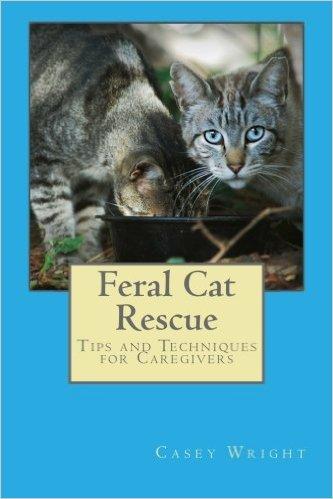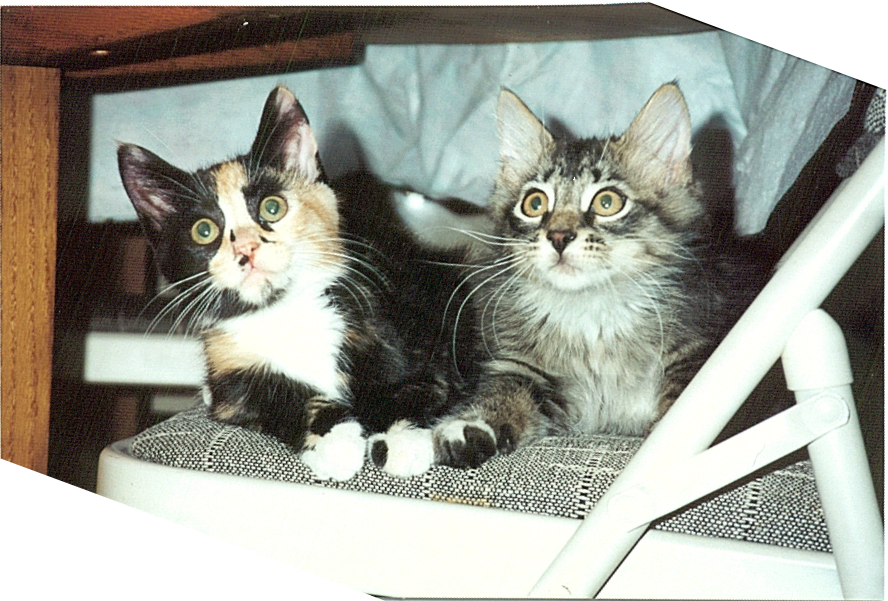When I was a young woman many years ago, one Mother’s Day I was feeling particularly lonely. My mother had died a few years before. I was staring out the patio window of my first-floor apartment at the beauty of nature when suddenly a thin, disheveled cat appeared on my balcony. She stared at me as if I could do no wrong. I stared at her. The very next day, I went out and bought her food.
I enjoyed seeing the cat each night eating and then lying on a chair on my balcony. I never really acknowledged that I had adopted “Scraggly,” my name for her.
One day I mentioned to my neighbor that the cat was beginning to fill out and looked much better. My neighbor laughed. The cat was pregnant, she said, but I didn’t need to worry. The cat was still so emaciated that at most she would have only one kitten. My neighbor told me to put out a box and then wait.
Soon five kittens were born–four females and one male. A short time later, Scraggly took a kitten in her mouth and knocked on my window. I let them in. In the end, I wound up keeping two kittens and the mother. I found homes for the others.
A New World
I had entered the world of people involved with outdoor cats. Sometime later, I found myself working with neighbors to help a feral cat and a few strays that had wandered into the area. I learned that the difference between a stray cat and a feral one is simply that a stray cat is comfortable with people, most likely owned at some time, while a feral cat shies away from us.
If a feral cat is brought into a shelter, there is a 99 percent chance of it being killed. Even no-kill shelters are very reluctant to accept feral cats.
The Trap-Neuter-Return (TNR) program is effective for this reason. In 2001, Alley Cat Allies launched National Feral Cat Day to raise awareness about outdoor cats, to help organize the compassionate people who care for the cats, and to promote TNR. It is celebrated every Oct. 16.
A Symbiotic Relationship
According to Alley Cat Allies, cats began their unique relationship with humans 10,000 to 12,000 years ago in the Fertile Crescent, the geographic region encompassing modern-day parts of West Asia where some of the earliest developments in human civilization occurred. Around this time, human settlements started to grow crops such as wheat and barley, and with that innovation also came the necessity to store unused grain.
Not surprisingly, the grain storage bins attracted a large number of rodents, which cats found easy prey. The cats and humans recognized a mutually beneficial relationship.
Cats remained outdoors until several important 20th century inventions—such as refrigeration (for pet food), kitty litter, and the mastery of spaying and neutering—allowed them to better live indoors.
However, cats’ basic behaviors and needs didn’t change; the feral cat population was not created by humans. Many cats simply still live outdoors and should not be considered lost or neglected pets. Instead, these cats have a place in the natural landscape.
The Trap-Neuter-Return Program

The TNR program allows humans and cats to have a more harmonious relationship. While people do not enjoy the fights and spraying of feline mating season, they don’t like the idea of cats being rounded up and killed either.
Scientific evidence indicates that trapping and killing outdoor cat populations just leads to an influx of new cats, either from neighboring territories or born from survivors. Each time cats are removed, the population rebounds through a natural phenomenon known as the “vacuum effect,” drawing the community into a costly, endless cycle of trapping and killing.
In a TNR program, however, the cats are humanely trapped (with box traps), brought to a veterinarian to be spayed or neutered, vaccinated, ear-tipped (the universal sign that a cat has been neutered and vaccinated), and then returned to the outdoor locations where they were found.
If those locations are deemed unsafe or otherwise inappropriate, the cats are relocated. Kittens still young enough to be socialized and friendly adult cats are typically placed in foster care for eventual adoption into homes as companion animals rather than returned to the outdoors.
Happier People, Happier Cats
Human residents are happy after the TNR of cats because their yowling, spraying, and fighting cease. But at the same time, the procedure makes a profound difference in the quality of outdoor cats’ lives.
Outdoor cats can live longer, healthier lives. Behavior in the cat colony improves after neutering or spaying because cats are relieved of the constant stresses of mating and pregnancy. Vaccinated against rabies, the cats are immune to a real danger of outdoor living. Studies have found that neutering improves feral cats’ coat condition and helps them gain weight. And as the cat community stabilizes, eventually it will naturally die out.
Of course, the rewards are not just on the animals’ side. Helping animals brings out the best in people. Here are some comments from people who have been involved with outdoor cats.
“Friendly, the cat, and I bonded,” Jeanne Hayman-Steen, a retired teacher, said. “After she went through the TNR, I took her in because she was such a gentle, loving cat. She would go out and explore each day but come back each night eager to be with me. As she was dying, she licked me. It was her way of saying thank you. It was me who should give thanks to her. It was privilege to have a cat like that.”
“My wife and I were older when we married. Button and Furby, feral cats caught at a very young age and socialized, became like our children. They made a wonderful marriage even richer,” Walter Rue, an application developer for mainframe computers, said.
Karen Wheelock, from Malden, Massachusetts, said: “Molly was a difficult cat to trap because so many people were feeding her. She had already had kittens, and I was anxious to trap her so that wouldn’t reoccur. I was so joyful when I finally was able to catch her. After TNR, I decided to keep her as a pet since she did not seem to dislike people. She proved to be a joy to own.”
Is Indoor Living Best?

I end this article with a children’s book by Cynthia von Buhler called “The Cat Who Wouldn’t Come Inside.” This impressive-looking book can be appreciated by all ages and is based on a true story about a stray feline outside an old Victorian house on a cold, wintry day.
A woman asks a cat to come inside, but he runs away. The following day, she puts out a bowl of warm milk on her front porch; the cat laps it up but still will not come inside. Each day, the woman leaves more and more gifts for the cat. The woman is convinced that the cat needs to come inside.
Finally, her front porch is as comfortable as the inside and the cat invites the woman to come out. The woman does, after she comes to the realization that not all cats belong indoors.
Some sources with good tips and techniques on TNR are “Feral Cat Rescue,” by Casey Wright; “Alley Cat Rescue’s Guide to Managing Community Cats,” by Louise Holton; and the superb website AlleyCat.org
Linda Wiegenfeld, a retired teacher, welcomes readers’ comments. Her email is [email protected]






Friends Read Free